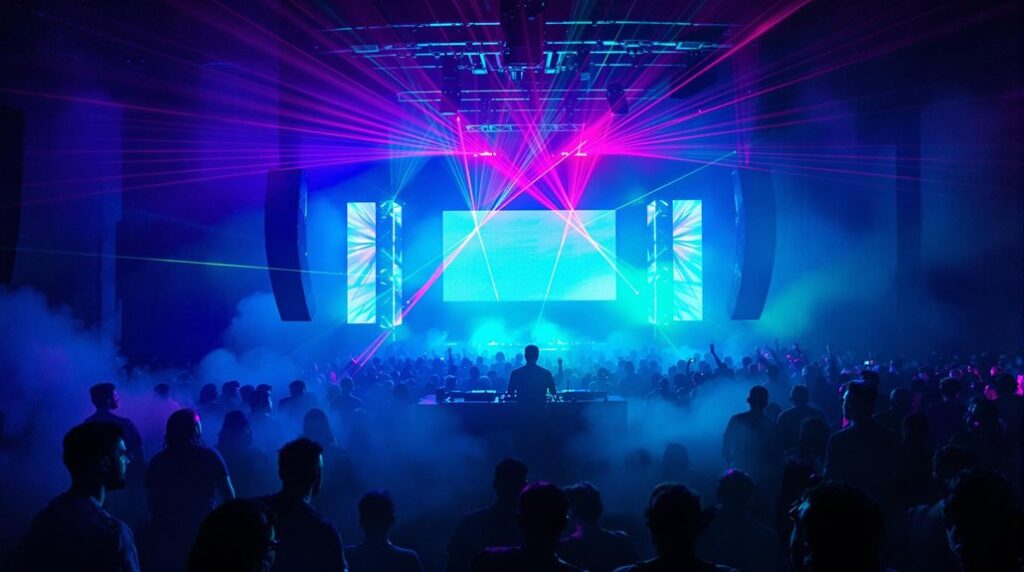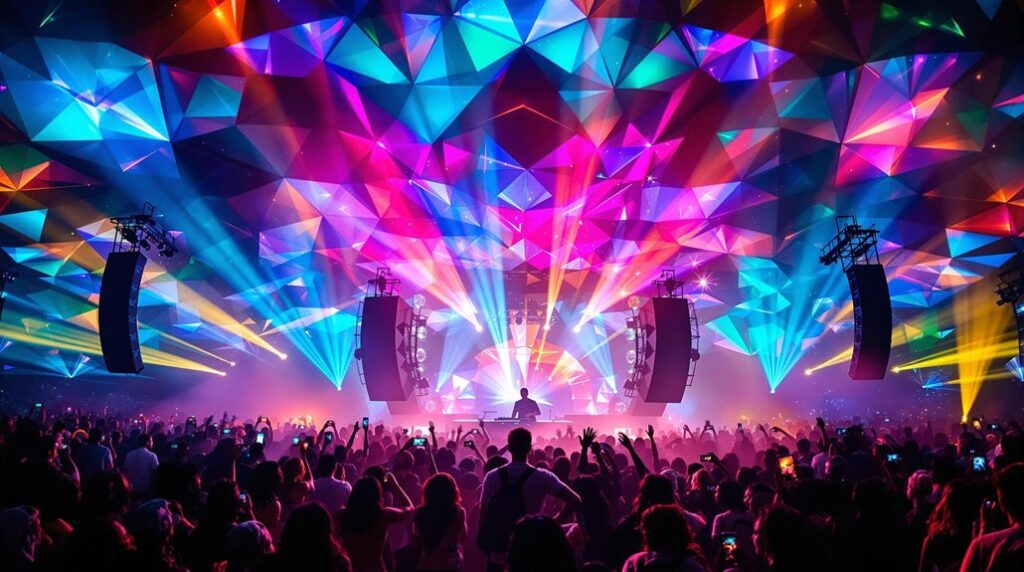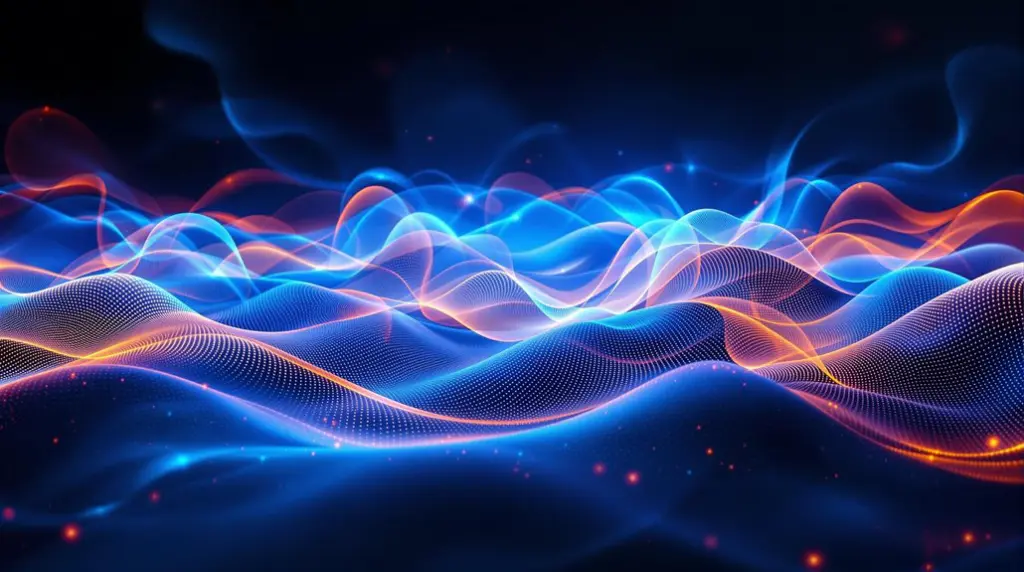You’ve witnessed the transformation of pop music beginning in the late 1970s as electronic beats emerged from the rhythmic backbone of disco and the textured sounds of synth-pop. As technology advanced, synthesizers and drum machines not only expanded musical possibilities but also shaped the very structure of what you know as pop music today. This fusion of electronic elements with traditional pop sensibilities prompted artists across genres to experiment, blending sounds in ways that challenged and expanded musical boundaries. Icons like Madonna and Daft Punk have masterfully incorporated these elements, setting the stage for future innovations. Your understanding deepens as you explore how these pioneers used the electronic beat to craft the evolving soundscape of pop music.
Key Takeaways
- Electronic beats emerged from disco and synth-pop, merging rhythmic and textural elements that redefined pop music.
- The advent of synthesizers and drum machines allowed for more creative and intricate beat-making in pop music production.
- MIDI and digital audio workstations facilitated seamless integration and innovation in electronic music composition.
- Genre fusion, such as electro-rock and electro-hip-hop, broke conventional boundaries, enriching pop music’s diversity.
- Collaborations between pop artists and electronic music producers continually push creative limits, influencing future pop music trends.
Origins of Electronic Beats
The origins of electronic beats, emerging in the late 1970s with the advent of disco and synth-pop, marked a pivotal transformation in the landscape of pop music. You’d notice how disco’s rhythmic importance and synth-pop’s textural distinctiveness combined to forge a new musical ethos. The disco origins, with their steady four-on-the-floor beats, not only amplified the dance culture but also integrated electronic elements that paved the way for more complex, layered soundscapes in pop music.
As you explore further, you’d see the synth pop influence was equally transformative. Synthesizers, being central to this genre, facilitated the creation of unique and futuristic rhythmic patterns that were previously unachievable with traditional acoustic percussion. This era’s artists exploited the novel timbres and programmability of synthesizers to expand the boundaries of pop music’s rhythmic foundation. The synthetic drum sounds and looped electronic beats that characterized much of the music from this period didn’t just complement the melodic content; they became fundamental to the identity of the tracks themselves.
This melding of electronic percussion with pop sensibilities didn’t just alter what you heard on the radio; it redefined the very structure and possibility of pop music, setting the stage for its evolution into the next decade.
Technological Advances Impact
Technological advances have dramatically transformed pop music production, enabling artists and producers to experiment with new sounds and complex arrangements. Instruments like synthesizers and drum machines, once revolutionary, are now staples in music studios worldwide. Their introduction not only broadened the sonic palette but also catalyzed shifts in production techniques, underpinning much of the evolutionary impact on modern pop music.
The advent of MIDI technology in the 1980s further revolutionized these processes. MIDI allowed for seamless integration of electronic elements, making it easier for you to manipulate and control various instruments from a single interface. This capability has been pivotal in refining the way pop music is structured and performed.
Digital audio workstations (DAWs) introduced another layer of sophistication. With DAWs, you’re able to construct and deconstruct musical pieces with unprecedented precision, layering sounds and effects to create intricate electronic beats that were once unimaginable. Sampling technology complements this by enabling the incorporation of an eclectic array of sounds, pushing the boundaries of genre conventions without the constraints of traditional instrumentation.
Moreover, tools like Auto-Tune and advanced vocal processing techniques haven’t only polished vocal performances but have expanded the scope of vocal creativity, further illustrating the profound evolutionary impact of these technological advances on pop music production techniques.
Genre Transformation and Fusion
Electronic beats frequently explore genre boundaries in pop music, fusing with diverse styles to create innovative soundscapes. You’ve witnessed how the pulsing rhythms of electronic music blend seamlessly with rock’s raw edge, pop’s catchy melodies, and hip-hop’s lyrical prowess. This fusion experimentation isn’t just about mixing sounds; it’s a sophisticated exploration of new sonic territories. It challenges the conventional, pushing genre boundaries and inviting artists to venture into uncharted musical landscapes.
The table below illustrates the transformative impact of electronic beats across various music styles, highlighting key aspects of genre fusion and creative collaborations:
| Style Merged | Key Characteristics | Examples of Fusion |
|---|---|---|
| Rock | Gritty guitar riffs integrated with electronic bass lines | Electro-rock |
| Hip-Hop | Synthesized beats meet street-smart lyrics | Electro-hip-hop |
| Classical | Orchestrated elements with ambient electronic layers | Electro-classical |
| Jazz | Smooth jazz saxophone with looped electronic backdrops | Electro-jazz |
| Reggae | Dub effects and rhythmic electronic grooves | Electro-reggae |
These collaborations do more than just produce hits; they redefine what’s possible in pop music. By incorporating electronic beats, artists and producers are not only expanding their creative horizons but also shaping the future soundscape of global pop culture.
Iconic Artists and Albums
Exploring the iconic artists and albums in pop music reveals how electronic beats have fundamentally reshaped the genre’s landscape. Consider Daft Punk’s ‘Discovery’ (2001), a seminal work that not only influenced artists across genres but also marked a significant cultural impact by blending house music with pop sensibilities. This album exemplifies how electronic beats can extend the reach and appeal of pop music, engaging wider audiences through its innovative sound.
Similarly, The Chemical Brothers’ ‘Surrender’ (1999) demonstrated artistic experimentation by infusing traditional pop structures with robust electronic rhythms, thereby altering perceptions of what pop music could encompass. The album’s success underlined the growing acceptance and integration of electronic music within mainstream pop.
Madonna’s ‘Ray of Light’ (1998), produced by William Orbit, brought a new depth to her music through its electronic textures, reflecting her personal transformation and the evolving landscape of pop music. This collaboration highlighted the potential for electronic music to enhance the emotional expressiveness of pop.
Pet Shop Boys’ ‘Very’ (1993) and Lady Gaga’s ‘The Fame’ (2008) further illustrate the diversity and adaptability of electronic beats in pop. Each album showcases how artists can maintain their distinct voices while adopting new technological tools, thereby pushing the boundaries of genre and artistic expression.
Future Trends in Pop Music
As we look towards the future, pop music is set to further embrace electronic beats and innovative production techniques, fundamentally altering its soundscape and audience engagement. The ongoing collaboration between pop artists and electronic music producers is poised to push the boundaries of what pop music can offer. This synergy isn’t just about adopting new sounds but also about redefining the very structure of pop music compositions.
Moreover, the role of AI algorithms in the music creation process is becoming increasingly significant. These algorithms analyze vast amounts of data to predict what qualities make a song appealing to audiences, thereby influencing how songs are written and produced. This integration of technology forecasts a shift where music creation becomes more data-driven.
The impact of these trends is also visible in live performances. Virtual and augmented reality technologies are starting to revolutionize concerts, making them more immersive experiences. Fans can now enjoy a more interactive and visually engaging show that extends beyond the auditory sensation, blending reality with digital enhancements.
These advancements suggest that the future of pop music won’t only be about listening but experiencing. As electronic beats continue to infiltrate, the intersection of technology and creativity is set to redefine mainstream music, making it a more dynamic and multi-sensory experience.
Frequently Asked Questions
How Did Electronic Music Evolve?
You’ve seen electronic music evolve through genre fusion and cultural influences, from experimental 20th-century origins to a mainstream powerhouse, fundamentally reshaping pop music with its innovative sounds and production techniques.
How Did Electronics Change How Music Was Created?
Electronics transformed music creation by introducing advanced production techniques and digital sampling. You’ve seen how these tools enabled artists to experiment more freely, crafting sounds and arrangements that were previously unimaginable.
What Role Did Synthesizers Play in the Evolution of Electronic Music?
Synthesizers were pivotal in electronic music’s evolution, allowing pioneers to merge genres seamlessly. They facilitated unique soundscapes and genre fusion, profoundly influencing musical creativity and production techniques across various styles.
What Was Electronic Music Inspired By?
Electronic music was inspired by futuristic concepts and cultural movements, evolving from early electronic instruments and recording technologies, which fueled avant-garde compositions and innovations in sound manipulation through the 20th century.
Conclusion
You’ve witnessed how electronic beats have revolutionized pop music, intertwining with technological advances to transform genres and inspire fusion.
Iconic artists and albums haven’t only embraced these changes but propelled them, crafting sounds that define and expand musical boundaries.
As you look to the future, consider how ongoing innovations and emerging trends will continue to shape the soundscape of pop music, potentially ushering in new eras of sonic expression and cultural impact.




